
Thank you to Nathen Amin of The Henry Tudor Society for sharing this on Facebook, I just had to share it with you. Henry Tudor’s Guide to Pembrokeshire – enjoy!
[Read More...]
Thank you to Nathen Amin of The Henry Tudor Society for sharing this on Facebook, I just had to share it with you. Henry Tudor’s Guide to Pembrokeshire – enjoy!
[Read More...]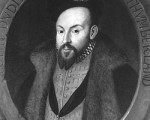
On this day in history…
17th July:
1497 – Death of Sir James Ormond (Butler), administrator and illegitimate son of John Butler, 6th Earl of Ormond, in a duel with Sir Piers Butler, near Kilkenny. The Butlers of Ormond were related to Thomas Boleyn, Queen Anne Boleyn’s father.
1537 – Burning of Janet Douglas, Lady Glamis, on the castle hill at Edinburgh after being found guilty of two counts of treason. She had been charged with plotting the King’s death (by poison) and assisting and corresponding with her brothers, Sir George Douglas and Archibald Douglas, 6th Earl of Angus.
1555 – Protestant martyrs Christopher Wade (Waid) of Dartford, linen-weaver, and Margaret Polley of Tunbridge, were burned for heresy. Click here to read more.
1555 – Birth of Richard Carew, antiquary, bee-keeper, translator and poet, at Antony House, Torpoint, Cornwall. Carew was the eldest son of Thomas Carew and his wife Elizabeth (née Edgcumbe). Carew was a member of the Elizabethan Society of Antiquaries, and his works included his “Survey of Cornwall”, a county history.
1565 – Death of Sir Thomas Dacre of Lanercost, illegitimate son of Thomas Dacre, 2nd Baron Dacre. He died while holding the office of Sheriff of Cumberland.
1601 – Death of Richard Latewar, poet, theologian, Vice-President of St John’s College, Oxford, and chaplain to Charles Blount, 8th Baron Mountjoy. He died from a gunshot wound sustained in a skirmish at Bennurb, in Ireland, while on a campaign there with Mountjoy. Latewar was buried at Armagh Cathedral, and a monument was erected to him in the chapel of St John’s in Oxford.
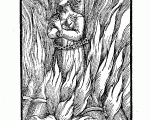
On this day in history, 17th July 1555, Protestants Margaret (Margery) Polley and Christopher Wade (Waid) were burned for heresy. Wade was a linen-weaver from Dartford and Polley was a widow from Pepenbury, Tunbridge Wells.
Martyrologist John Foxe described Margaret Polley as being “in the prime of her life, pious, charitable, humane, learned in the Scriptures, and beloved by all who knew her” and “the first female martyr in England”, although surely that title actually belongs to Anne Askew, who was burned for heresy in 1546.
Here is John Foxe’s account of the condemnations and burnings of Polley and Wade:
[Read More...]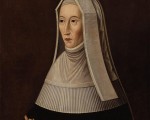
It’s that time of week again! Time to test your Tudor history knowledge with a fun quiz. Grab your favourite beverage and a snack, and good luck!
[Read More...]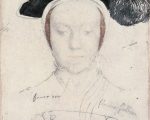
Born in 1519, Mary Howard was the daughter of Thomas Howard, third Duke of Norfolk. Her mother, Elizabeth, was the daughter of the disgraced Edward Stafford, Duke of Buckingham. Mary was highly educated, and spent the majority of her childhood at the family residences in Norfolk. As she entered her teenage years, Mary participated in ceremonies at court, including that of her kinswoman Anne Boleyn’s elevation to the marquisate of Pembroke in September 1532. It is likely that Mary also attended Anne’s coronation the following summer, and she carried the chrism at Princess Elizabeth’s christening in September. She seems to have shared the queen’s reformist sympathies and was rebuked by her brother for her love of reading the scriptures.
[Read More...]
Happy St Swithin’s Day! Yes, today, 15th July, is the feast day of St Swithin or Swithun. Here is an extract from our feast day section…
St Swithin’s Day commemorates the 9th century Saxon bishop, Swithin, who was chaplain to Egbert, King of Wessex, and the patron saint of Winchester. One miracle associated with him is that of him mending broken eggs. According to the story, an old lady’s eggs had been accidentally smashed by workmen working on a church. Swithin picked them up and as he did so they became whole eggs once again.
[Read More...]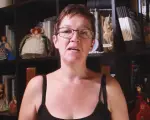
In today’s Claire Chats video, I look at the primary sources for the great drought of 1540, the same summer that Henry VIII married Catherine Howard and executed Thomas Cromwell.
[Read More...]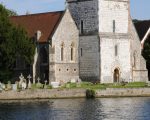
Today is the anniversary of the death, on 13th July 1566, of Sir Thomas Hoby, diplomat, courtier and translator, at Paris. Hoby was buried in All Saints Church, Bisham.
Hoby was the second son of William Hoby of Radnor and his wife, Katherine Forden, and he was born at Leominster in Herefordshire in 1530. He was educated at St John’s College, Cambridge, matriculating in May 1545. Between 1545 and 1547 he studied under the famous Tudor scholar John Cheke but in August 1547, heeding the advice of his half-brother, Sir Philip Hoby, he left Cambridge without obtaining a degree and set off for the Continent. His Oxford Dictionary of National Biography biographer writes of how he studied classics and theology for nearly a year in Strasbourg as the guest of reformer Martin Bucer.
[Read More...]
On this day in history, 13th July 1527, John Dee was born in London.
Dee was an amazing man. He was an astrologer, mathematician, alchemist, antiquary, spy, philosopher, geographer and an adviser to Elizabeth I and various influential statesmen during her reign.
[Read More...]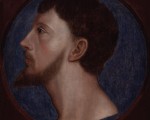
Thank you to Georgia for asking this question: “I am unable to find any primary accounts of Wyatt’s Rebellion of 1554 – there are only secondary takes on the causes of the rebellion. I was just wondering if you had any links to a primary source that would be of assistance”.
I (Claire Ridgway) will answer this question as I have a list of primary source from when I researched the rebellion in the past.
“The Historie of Wyate’s Rebellion with the Order and Maner of Resisting the same” by John Proctor in “Tudor Tracts 1532-1588″…
[Read More...]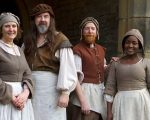
Thank you to Tudor Society members Dawn Hatswell for alerting me about this programme which airs on BBC Two at 8pm on Wednesday 19th July 2017. It’s part 1 of a 3 part series looking at sweet makers in different historical periods.
Here is the BBC’s blurb for the Tudor episode:
“Four modern confectioners step back in time to discover what life was like for their Tudor predecessors. They’ll explore how our national sweet tooth developed, and how the tables of the aristocracy boasted fantastic displays of sugar craft which showed off their owners’ wealth and status.
[Read More...]
On this day in history, 12th July 1543, the fifty-two-year-old King Henry VIII married thirty-one-year-old Catherine Parr, Lady Latimer, in the Queen’s Closet of the Chapel Royal at Hampton Court Palace.
Here is a primary source account of Henry VIII’s sixth, and Catherine’s third, marriage. It is the notarial attestation by Richard Watkins, the King’s prothonotary, and can be found in Letters & Papers:
[Read More...]
The Richard III Society and John Ashdown Hill’s Facebook page have just shared the awful and very sad news that John has been diagnosed with Motor Neurone Disease. Here is what the Richard III Society shared on their page:
[Read More...]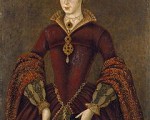
On this day in history, 10th July 1553, the new monarch, Queen Jane, formerly Lady Jane Grey, was received at the Tower of London, accompanied by her husband, Lord Guildford Dudley, and proclaimed queen.
Merchant-taylor of London and diarist Henry Machyn records this event in his diary:
[Read More...]
On this day in history…
10th July:
1553 – Lady Jane Grey, her husband, Guildford Dudley, her parents and Guildford’s mother arrived by barge at the Tower of London, having travelled from Syon. Two heralds then proclaimed that Lady Jane Grey was now Queen of England before they moved on to proclaim their message in Cheapside and Fleet Street.
1553 – A letter arrived from Mary, daughter of Henry VIII, informing the council that she was the rightful heir to the throne, not Lady Jane Grey, and demanding their support.
1559 – Death of Henry II of France. He had been injured in a joust on 30th June when he was hit in the face by a lance. It is thought that a splinter entered his eye and went into his brain. He was buried in the Saint Denis Basilica.
1559 – Accession of Francis II and Mary, Queen of Scots as King and Queen of France.
1584 – Assassination of William of Orange, also known as William the Silent or William I, Prince of Orange. He was shot in the chest at his home in Delft by Balthasar Gérard, a Catholic Frenchman. A reward of 25,000 crowns had been offered by Philip II of Spain for the assassination of William, who was the main leader of the Dutch Protestant revolt against Spanish forces in the Netherlands. William was buried in the New Church in Delft. Gérard was captured and was tortured for days before being executed on 14th July 1584.
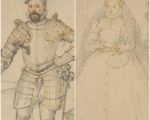
This day in history, 9th July 1575, was the first day of a 19-day-long stay for Elizabeth I at Kenilworth Castle, Warwickshire, home of her great friend, Robert Dudley, Earl of Leicester.
This visit was significant as it was the longest stay at a courtier’s house in any of Elizabeth’s royal progresses, and Leicester went to extraordinary lengths to impress his friend and queen, probably as a last-ditch attempt to woo her and win her hand in marriage.
[Read More...]
As today is the anniversary of the annulment of the marriage of Henry VIII and Anne of Cleves on 9th July 1540, I thought we would mark the occasion with an Anne of Cleves wordsearch as our Sunday fun.
Print it out, grab a drink and snack, and have a few minutes fun. It’s not too hard, I promise!
[Read More...]
On this day in history, Saturday 8th July 1553, the day after she’d been informed of her half-brother Edward VI’s death, Mary Tudor, eldest daughter of King Henry VIII declared herself queen.
Mary gathered together her loyal household at Kenninghall and informed them of Edward VI’s death, stating that “the right to the crown of England had therefore descended to her by divine and by human law”.
[Read More...]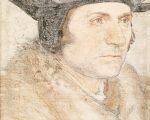
Yesterday was the anniversary of the execution of Sir Thomas More, former Lord Chancellor to Henry VIII, on 6th July 1535. To commemorate that anniversary, I thought I would share with you a brief bio of More, based on an extract from my book On This Day in Tudor History, and then some videos about him.
Sir Thomas More is thought to have been born on 7th February 1477 or 1478 n Milk Street, London, and he was the son of Sir John More, lawyer and judge on the King’s Bench, and Agnes Graunger, daughter of Thomas Graunger, a Merchant of the Staple of Calais and an Alderman of London.
More joined the household of John Morton, Archbishop of Canterbury, before studying Latin and logic at the University of Oxford. He then studied law in London. It was while he was a student that he met and became friends with men like William Lilye, John Colet and Erasmus.
[Read More...]
The Northern Rebellion of 1569, also known as the Revolt of the Northern Earls, was the only major armed rebellion during the reign of Elizabeth I. In the last months of 1569, the earls of Northumberland and Westmorland rebelled against the queen in an attempt to preserve Catholicism. The establishment of the Elizabethan settlement alienated those who favoured the old religion, and their disaffection increased as growing numbers were arrested and imprisoned for religious nonconformity. This disaffection was spurred by the arrival in England of Mary, Queen of Scots, in 1568, the year before the rebellion. Mary had been forced from her throne after the murder of her second husband Henry, Lord Darnley, and her swift remarriage to Darnley’s suspected murderer, James, Earl of Bothwell. Mary’s Catholic faith made her a sympathetic figure to traditionalists in England. Although the majority of English Catholics remained loyal to Elizabeth, some were determined to force her from the throne and replace her with her cousin Mary, who they hoped would restore Catholicism to the realm.
[Read More...]
Some exciting news from us here at the Tudor Society about our new Tudor rose pin badge.
[Read More...]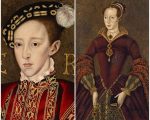
On this day in history, 6th July 1553, between 8 and 9 o’clock in the evening, fifteen-year-old King Edward VI died in the arms of Sir Henry Sidney, one of the Chief Gentleman of his Privy Chamber, at Greenwich Palace. His last words were reported to be “I am faint; Lord have mercy upon me, and take my spirit”.
Edward VI had been ill for several months and on 21st June 1553 his “Devise for the Succession” had been issued as “Letters Patent for the Limitation of the Crown”. In his devise, Edward VI stipulated that his crown was to be passed on to “the eldest SONNE OF THE BODYE OF THE SAID LADY FRAUNCIS [Frances Brandon, Duchess of Suffolk], LAWFULLY BEGOTTONE, beinge borne into the world in our lyfetyme” and failing that the crown would pass on to Frances’ daughter, Lady Jane Grey, and her heirs male. When Edward died in July 1553, Frances did not have a son and so Jane became queen, being officially proclaimed such on 10th July 1553.
[Read More...]
Thank you to Rioghnach for asking this question. Here is her question in full:
“I’m a predominantly Dark Ages re-enactor and I’m frequently in awe of Tudor era female reenactors who tend to have the most amazing lace ruffs and collars. If I use the Armada Portrait of 1588, the Rainbow Portrait of 1600 and Marcus Gheeraerts the Younger’s rather unflattering 1595 portrait of Elizabeth as examples, how were these magnificent lace collars made to remain stiff? I’ve heard tell that Arum italicum and Arum maculatum (aka “Lords and Ladies”) were used to create the starch needed to keep such flamboyant ruffs stiff. Is this true, and if so how was it done?”
Historian Toni Mount, a specialist in the social history of the medieval and Tudor periods, was the perfect person to answer this question, particularly as she had mentioned the use of starch in the Elizabethan period for ruffs in her June 2017 expert talk. Here is Toni’s answer…
[Read More...]
Just a quick post to let you know that we have added a “schedule of events” to the Tudor Society website.
This schedule includes forthcoming Tudor Life magazine topics, expert speakers and topics, and informal live chat topics. It will be updated regularly so you can keep up-to-date with the exciting things we have planned for the Tudor Society and, of course, get involved with the live chats.
[Read More...]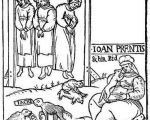
On this day in history, 5th July 1589, Joan Cunny (Cony), one of the ‘Essex Witches’, was hanged at Chelmsford.
Joan Cunny was born in around 1508 and was from Stisted in Essex. She was accused of killing her neighbours and causing a great storm. Cunny had told of how she knelt in a circle and prayed to Satan to conjure her familiar and spirits. The pre-trial examination of Joan Cunny, along with those of Joan Prentice and Joan Upney, was published in 1589 as The Apprehension and Confession of Three Notorious Witches. Joan Prentice, who had a ferret-shaped familiar named Satan who had killed a child, was also hanged on 5th July, as was Joan Upney.
[Read More...]
Thank you so much for Roland Hui, art historian, blogger and author of The Turbulent Crown: The Story of the Tudor Queens for offering to moderate an informal live chat for us this month.
Roland has an extensive knowledge of Tudor art, particularly portraiture, and blogs about it regularly at his TudorFaces blog. Recently, his view that an image in the Black Book of the Garter was based on Anne Boleyn caused some controversy online and his research is top notch.
[Read More...]
On this day in history, 4th July 1597, in the reign of Queen Elizabeth I, three men were martyred at Knavesmire, York. They were William Anlaby (or Andleby), Catholic priest; layman Thomas Warcop, who had been charged with harbouring Anlaby, and layman Edward Fulthrop.
William Anlaby was born c.1552 in Etton, Yorkshire, and was the second son of John Anlaby of Etton and his wife, Dorothy. Anlaby graduated BA from St John’s College, Cambridge, in 1571. He converted from Protestantism to Catholicism in 1577 after meeting Cardinal William Allen at Douai while travelling. Anlaby joined Allen’s college, or seminary, there and was ordained as a Catholic priest at Cateau-Cambrésis. In 1578, Anlaby was sent as a missionary to England, where he worked in Lincolnshire, Huntingdonshire, Durham and Yorkshire, including ministering to Catholic prisoners at Hull gaol.
[Read More...]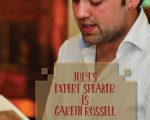
For this month’s expert talk we have Gareth Russell, author of “Young and Damned and Fair”, talking about the rise of the Howard family.
[Read More...]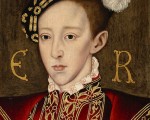
On this day in history…
3 July:
1495 – The pretender Perkin Warbeck landed at Deal in Kent with men and ships. Around 150 of his men were killed and over 160 captured by Henry VII’s troops. Warbeck escaped, fleeing to Ireland. Warbeck claimed to be Richard, Duke of York, the younger of the Princes in the Tower.
1533 – William Blount, 4th Baron Mountjoy, Catherine of Aragon’s Chamberlain, was ordered to inform Catherine again that she must recognise her new title of ‘Princess Dowager’ and not use the title of ‘Queen’. Catherine refused, and whenever she saw her new title written in letters, she crossed it out with a pen.
1541 – Death of Girolamo Ghinucci, Italian papal administrator, Bishop of Worcester, papal nuncio and ambassador. He died in Rome and was buried in the church of San Clemente.
1557 – Mary I bid farewell to her husband, Philip of Spain, at Dover as he set off for war with France.
1579 – Death of Sir Edward Fitton, administrator and Vice-Treasurer for Elizabeth I in Ireland. His death was recorded as being ‘from the disease of the country’, which he had apparently caught on an expedition to Longford. He was buried in St Patrick’s Cathedral, Dublin, beside his wife, Anne.
1594 (3rd or 4th July) – Executions of Catholic priest John Cornelius, Thomas Bosgrave (a relation of Sir John Arundell) and two servants of the Arundell family at Dorchester. They had been arrested when Cornelius was found hiding in a priest hole at Chideock Castle on 14th April 1594
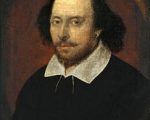
Yes, it’s time for our weekly quiz, so grab a comfortable seat, a refreshing drink (and a yummy snack, why not?)
and test your Tudor history knowledge with this fun quiz. Good luck!